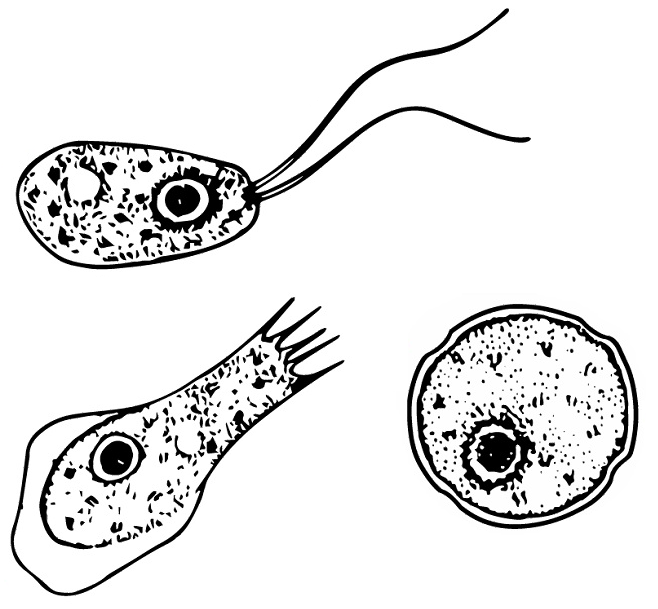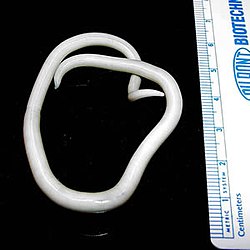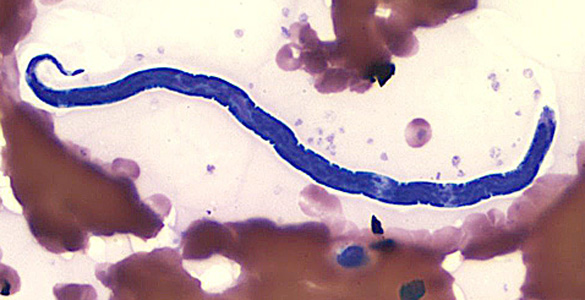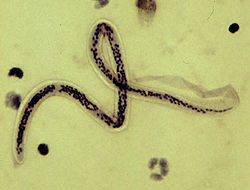- Just Released! Creatures From Hell On Earth Today? Monsters, Dragons, and Dinosaurs-The Truth, Finally Revealed! Noah’s Ark, the Great Flood, Creation, Existence, and More! (Absolutely Stunning Videos)
- Cops Now Using a Pre-Crime Algorithm Against You Assigning a “Threat Rating” Based Off Your Social Media… Be Careful What You Say…Outrage!
- It’s Getting Weird- Destruction is Coming and We Are Witness the Biblical Fulfillment of Ezekiel 38: The Beast Rising, the Pope Predicting His Own Death, an Economy Crisis, Christians Labeled as Haters, and a Bible Prophecy Explosion Like Never Before!!! End Days Approaching…
- Experts Warning US Citizens To Prepare For ‘The Big One’-Extremely Concerned Over New Earthquake Data. God Is About To Shake ‘the Hell’ Out of USA At Any Moment! (Chilling Videos)
- Warning-USA! Deadly Levels of Radiation Escalate and Growing At Unprecedented Rate! Experts Are Very Concerned (Shocking Videos)
Related Articles
- Hell Unleashed On Earth–NWO, Alien Invasions, HAARP and Their Twisted Plans To Take Over the INTERNET! (Video) 2
- Dr Leonard Horowitz Emerging Viruses AIDS & Ebola Nature, Accident or Intentional 0
- CIA Insider Warns Collapse Will Strike America in Just a Few Months in 2015? Project Prophecy–A Gov Secret Project–Predicts it Will be Unavoidable and That the U.S. Will Have a 25 Year Great Depression… 0
From worms that cause terrifying mutations, to brain eating amoebas living inside your body. Here is a list of the top ten parasites that could be living and feasting on your body at this moment…
Video by …
According to the video above here is the top ten:
1- Naegleria Fowleri -
“It is a free-living, thermophilic excavate form of protist typically found in warm bodies of fresh water, such as ponds, lakes, rivers, and hot springs. It is also found in soil, near warm-water discharges of industrial plants, and in poorly chlorinated, or unchlorinated swimming pools, in anamoeboid or temporary flagellate stage. There is no evidence of this organism living in salt water. It is an amoeba belonging to the phylum Percolozoa. N. fowleri can invade and attack the human nervous system and brain, causing primary amoebic meningoencephalitis (PAM). Although this occurs rarely,[1] such an infection nearly always results in the death of the victim.[2] The case fatality rate is greater than 95%.” Wikipedia

2- Wuchereria Bancroft -
“It is a human parasitic roundworm that is the major cause of lymphatic filariasis. It is one of the three parasitic worms, besides Brugia malayi and B. timori, that infect lymphatic system to cause lymphatic filariasis. These filarial worms are spread by a mosquito vector. W. bancrofti is the most prevalent among the three and affects over 120 million people, primarily in Central Africa and the Nile delta, South and Central America, and the tropical regions of Asia including southern China and the Pacific. If the infection is left untreated, it can develop into a chronic disease called elephantiasis. In rare conditions it also causes tropical eosinophilia, an asthmatic disease. Limited treatment modalities exist and no vaccines have been developed.” Wikipedia
3- Trichuris Trichiura -
“The round worm is a worm that causes trichuriasis when it infects a human large intestine. It is commonly known as the whipworm which refers to the shape of the worm; it looks like a whip with wider “handles” at the posterior end.” Wikipedia

“It is an anaerobic parasitic protozoan, part of the genusEntamoeba.[1] Predominantly infecting humans and other primates, E. histolyticais estimated to infect about 50 million people worldwide. Previously, it was thought that 10% of the world population was infected, but these figures predate the recognition that at least 90% of these infections were due to a second species, E. dispar.[2] Mammals such as dogs and cats can become infected transiently, but are not thought to contribute significantly to transmission.” Wikipedia

5- Trypanosoma Brucei -
“It is a species of salivary trypanosome which causes African trypanosomiasis, known also as sleeping sickness in humans and nagana in animals. T. brucei has traditionally been grouped into three subspecies: T. b. brucei, T. b. gambiense and T. b. rhodesiense. Only rarely can the subspecies T.b.brucei infect a human.
“Transmission of T. brucei between mammal hosts is usually by an insect vector, the tsetse fly. T. brucei parasites undergo complex morphological changes as they move between insect and mammal over the course of their life cycle. The mammalian bloodstream forms are notable for their variant surface glycoprotein(VSG) coats, which undergo remarkable antigenic variation, enabling persistent evasion of host adaptive immunity and chronic infection. T. brucei is one of only a few pathogens that can cross the blood brain barrier.[2] There is an urgent need for the development of new drug therapies as current treatments can prove fatal to the patient.” Wikipedia

6- Toxoplasma Gondii (spread by cats)
“It is an obligate, intracellular, parasiticprotozoan that causes the disease toxoplasmosis.
“Found worldwide, T. gondii is capable of infecting virtually all warm-blooded animals.[2]In humans, it is one of the most common parasites; serological studies estimate that up to a third of the global population has been exposed to and may be chronically infected with T. gondii,although infection rates differ significantly from country to country. Although mild, flu-like symptoms occasionally occur during the first few weeks following exposure, infection with T. gondii generally produces no symptoms in healthy human adults. However, in infants, HIV/AIDS patients, and others with weakened immunity, infection can cause serious and occasionally fatal illness (toxoplasmosis).
“Infection in humans and other warm-blooded animals can occur
- by consuming raw or undercooked meat containing T. gondii tissue cysts
- by ingesting water, soil, vegetables, or anything contaminated with oocysts shed in the feces of an infected animal
- from a blood transfusion or organ transplant
- or transplacental transmission from mother to fetus, particularly when T. gondii is contracted during pregnancy
“Although T. gondii can infect, be transmitted by, and asexually reproduce within humans and virtually all other warm-blooded animals, the parasite can sexually reproduce only within the intestines of members of the cat family (felids). Felids are therefore defined as the definitive hosts of T. gondii, with all other hosts defined as intermediate hosts.
“A number of studies have suggested subtle behavioral or personality changes may occur in infected humans, and infection with the parasite has recently been associated with a number of neurological disorders, particularly schizophrenia. However, evidence for causal relationships remains limited.” Wikipedia

“It is a nematode that causes onchocerciasis or “river blindness” mostly in Africa. Long-term corneal inflammation, or keratitis, leads to thickening of the corneal stroma which ultimately leads to blindness. Humans are the only definitive host for O. volvulus. The intermediate host or vector is the black fly(Simulium).” Wikipedia

8- Ascaris Lumbricoides –
“It is the giant roundworm of humans, growing to a length of up to 35 cm.[1] An ascarid nematode of the phylum Nematoda, it is the largest and most common parasitic worm in humans, responsible for the disease ascariasis. One-sixth of the human population is estimated to be infected by A. lumbricoides or another roundworm. Ascariasis is prevalent worldwide, especially in tropical and subtropical countries.” Wikipedia

9- Loa Loa –
“It is the filarial nematode (roundworm) species that causes Loa loa filariasis. It is commonly known as the “eye worm”. Its geographic distribution includes Africa and India.
“L. loa is one of three parasitic filarial nematodes that cause subcutaneous filariasis in humans. The two other filarial nematodes are Mansonella streptocerca and Onchocerca volvulus (causes river blindness).
“Maturing larvae and adults of the “eye worm” occupy the subcutaneous layer of the skin – the fat layer – of humans, causing disease. The young larvae develop in horseflies of the genus Chrysops (deer flies, yellow flies), including the species C. dimidiata and C. silacea, which infect humans by biting them.” Wikipedia

10- Leishmania (contacted by Sandfly bites) –
“It is a genus of trypanosomatid protozoa and is the parasite responsible for the disease leishmaniasis. It is spread through sandflies of the genus Phlebotomus in the Old World, and of the genus Lutzomyiain the New World. At least 93 sandfly species are proven or probable Leishmania vectors worldwide.[3] Their primary hosts are vertebrates; Leishmania commonly infects hyraxes, canids, rodents, and humans.”Wikipedia







Pingback: ALERT! About 75% The Population Infected With These Blood-Sucking Parasites, Some Deadly! Read With Caution! (Video) — State of Globe()